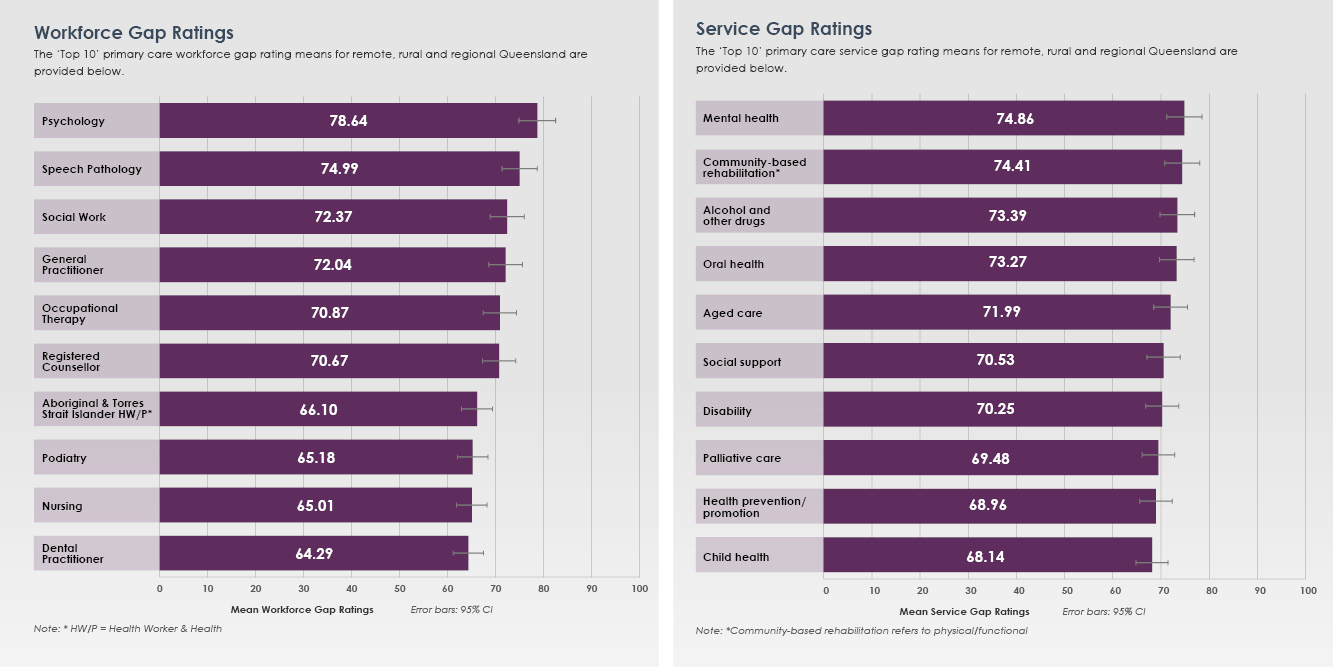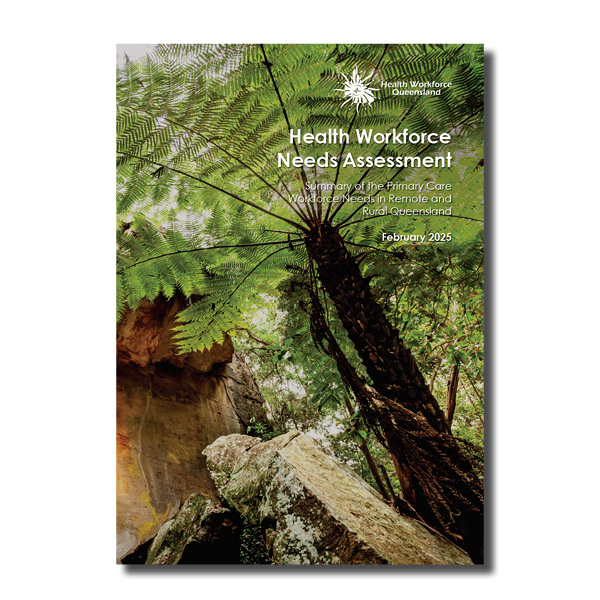KEEP IN TOUCH
(07) 3105 7800
Turrbal and Jagera Country
Level 4, 348 Edward Street
Brisbane QLD 4000
(07) 3105 7800
Turrbal and Jagera Country
Level 4, 348 Edward Street
Brisbane QLD 4000
Each year, Health Workforce Queensland (HWQ) publishes a series of reports that provide a detailed picture of the primary health workforce across remote and rural Queensland. These reports help identify service gaps, workforce needs, and emerging issues, supporting effective planning and policy decisions.
HWQ maintains a comprehensive and up-to-date database of general practitioners (GPs) working across Modified Monash (MM) 2-7 areas, including those in private practices, small hospitals, the Royal Flying Doctor Service (RFDS), and Aboriginal Community Controlled Health Services (ACCHS). This data underpins the Minimum Data Set (MDS) Report, which tracks GP distribution and workforce trends across the state.
The Health Workforce Needs Assessment (HWNA) and its companion PHN Region: Addendum Report are based on annual surveys and stakeholder input from across medical, nursing, midwifery, allied health, and First Nations health workforces. Together, they offer a snapshot of workforce dynamics and service access across remote and rural Queensland.
GP and nurse numbers increased across MM 2–7 Queensland.
For the first time since 2015, overseas-trained GPs outnumbered Australian-trained GPs in remote and rural areas.
Occupational therapy re-entered the top five workforce gaps.
Nine of 20 primary care workforces recorded a decrease in gap ratings.
Workforce gaps increased most in podiatry, dental, and radiography/sonography.
Key issues raised included recruitment/retention, access to services, funding, and long wait times.
Practitioners reported improved wellbeing compared to two years ago, but faced barriers to mental health care, including privacy concerns, workforce shortages, and cost.
Workforce shortages, privacy concerns, and cost limited access to mental health services.
Read more about the last two points, in our 2025 Issue in Focus article below.


Regional Differences in Workforce and Service Gaps from the PHN Addendum Report
While all PHN regions shared common workforce challenges, particularly in psychology, speech pathology, social work, general practice, occupational therapy, and registered counselling, some region-specific differences stood out:
Western Queensland (WQ) uniquely reported radiography/sonography, dental, and audiology among its top five workforce gaps.
Service gaps commonly included mental health, community rehabilitation, alcohol and other drugs, oral health, and aged care.
Notable regional service differences: CQWBSC: Social support, DDWM: Health promotion/prevention, WQ: Disability and palliative care.
Differences were also observed across Hospital and Health Service (HHS) areas within each region, highlighting the need for locally tailored workforce strategies.


The Minimum Data Set (MDS) Report offers further evidence of both progress and persistent challenges:
From Nov 2023 to Nov 2024, there was a net gain of 131 medical practitioners in MM 2–7 regions.
The proportion of female practitioners has increased by 2.8% since 2020.
Over 31% of medical practitioners indicated they plan to stay less than 3 years in their current location.
GPs in MM 2–7 Queensland come from over 75 countries, with 51.2% from Oceania (48.7% from Australia), Asia (30.0%), Europe (9.9%), Africa (7.7%), North and South America (1.2%).
The workforce spans a wide age range, from 26 to 88 years.
There was a 5.3% decrease in GPs reporting private general practice as their primary role in Remote & Very Remote areas.
While the number of GPs increased by 8% over the last 5 years, the workforce gap rating increased by 16%, indicating supply is not keeping pace with demand.
Together, these reports provide a clear and evolving picture of Queensland’s remote and rural health landscape, helping shape responsive, data-driven approaches to workforce development and service delivery.
|  |  |
At the end of the 2024–25 financial year, the team responsible for managing HWQ’s data and reporting underwent a name change. Previously known as Health Workforce and Service Planning (HWaSP), the team is now called Health Workforce Insights and Strategy (HWIS), reflecting a broader focus on strategic analysis and workforce insight to support future planning and decision-making.
